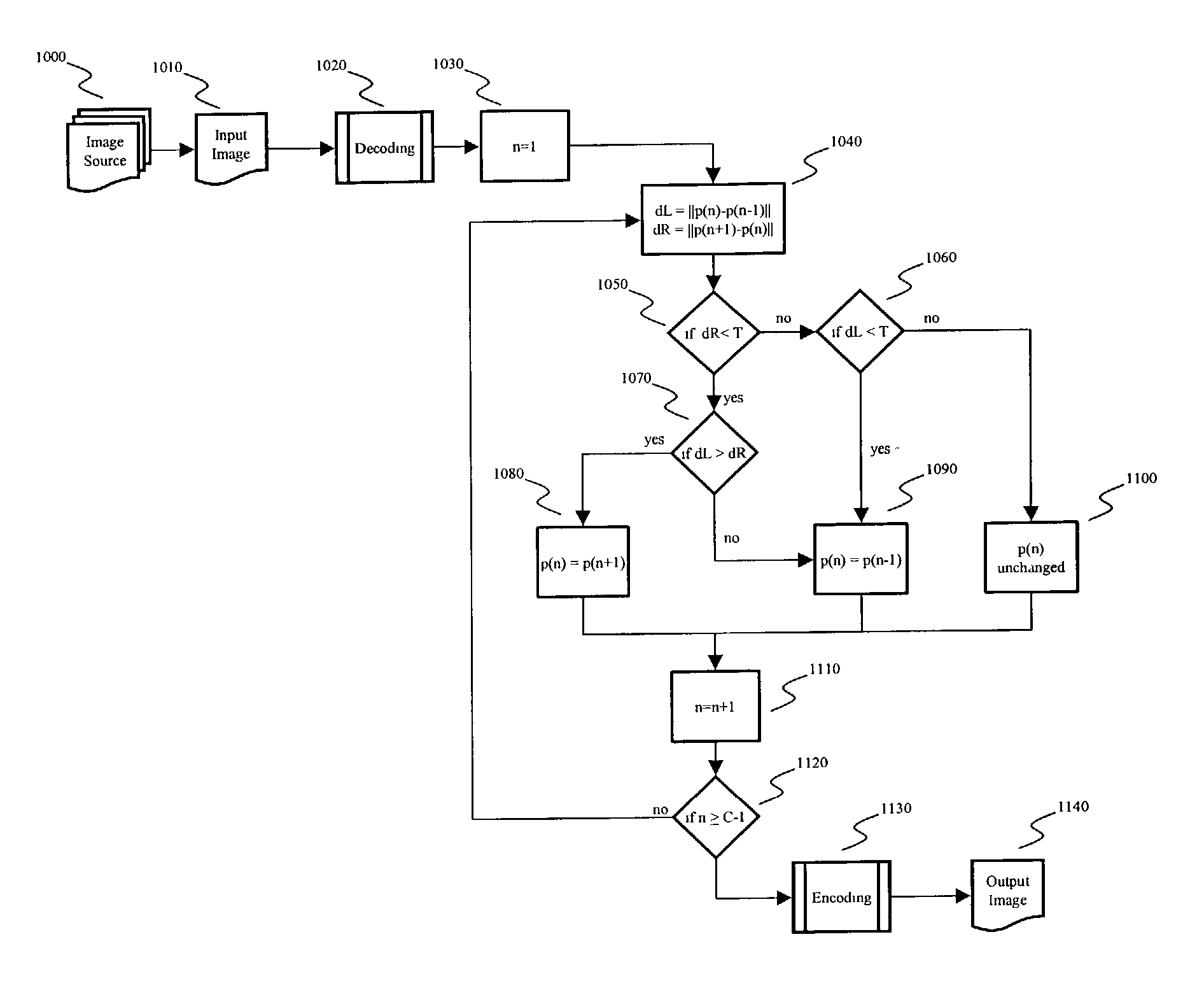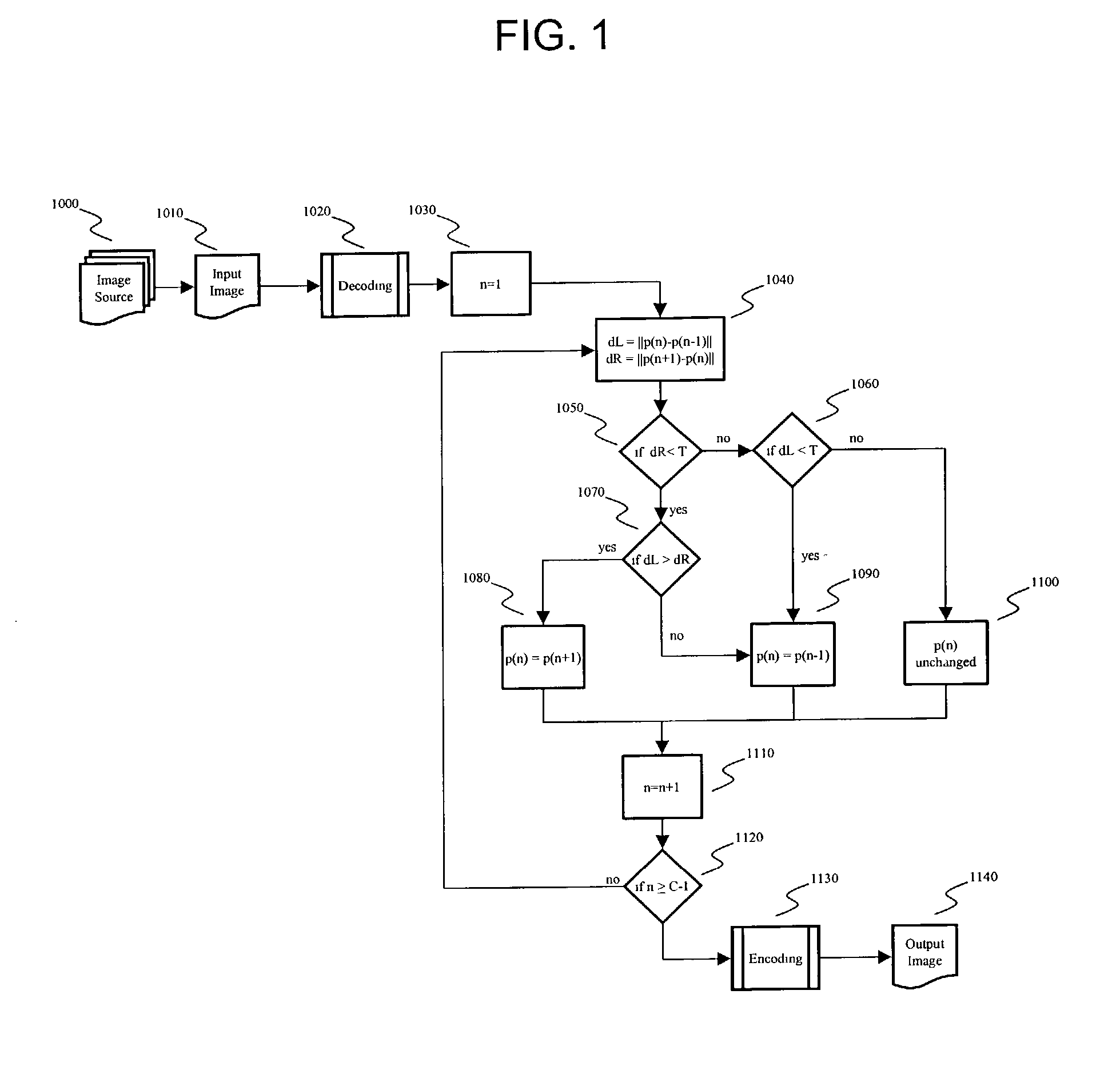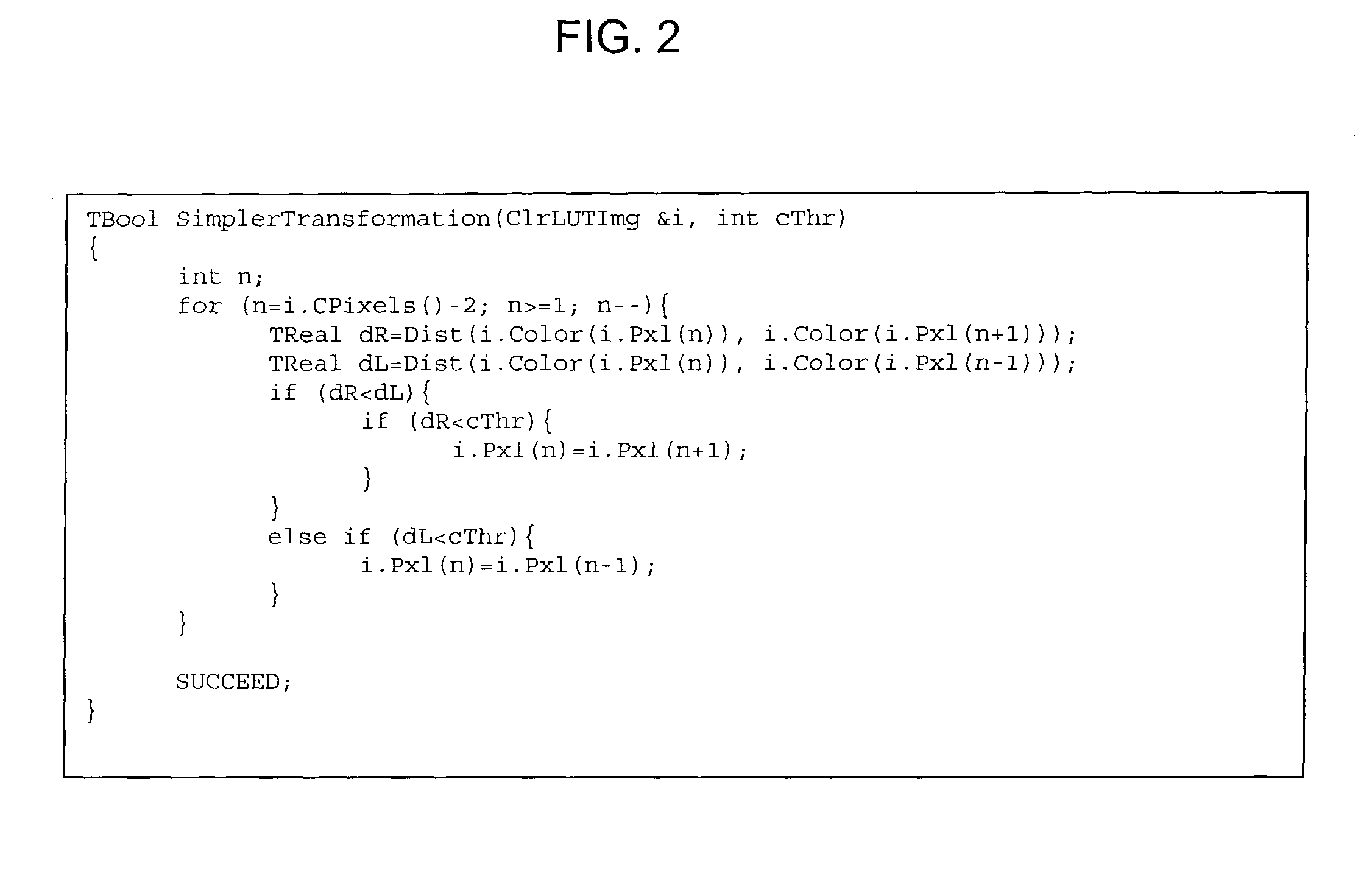Transformation to increase the lempel-ziv compressibility of images with minimal visual distortion
a compression technique and image compression technology, applied in the field of compression of digital images, can solve the problems of lossy or lossless compression, large digital image data, loss of image detail, etc., and achieve the effect of introducing minimal visual distortion, increasing compressibility of images, and enhancing dictionary-based image compression techniques
- Summary
- Abstract
- Description
- Claims
- Application Information
AI Technical Summary
Benefits of technology
Problems solved by technology
Method used
Image
Examples
Embodiment Construction
[0031]A preferred embodiment of the invention is described below. It should be noted that this and any other embodiments described below are exemplary and are intended to be illustrative of the invention rather than limiting.
[0032]Broadly speaking, the invention comprises systems and methods for increasing the compressibility of digital images by examining the pixels of the image and, if the color of a given pixel is close enough to the color of one of its neighbors, the color of the pixel is changed to the color of the neighboring pixel. In this manner, the number of consecutive pixels of the same color is increased, making the image data more compressible with respect to dictionary-based compression techniques
[0033]Generally, the pixels for an image are examined one by one, working left to right, then top to bottom. For each pixel, it is determined whether the color value of the pixel is within a threshold difference or “distance” of that of either the preceding (left) or succeedi...
PUM
 Login to View More
Login to View More Abstract
Description
Claims
Application Information
 Login to View More
Login to View More - R&D
- Intellectual Property
- Life Sciences
- Materials
- Tech Scout
- Unparalleled Data Quality
- Higher Quality Content
- 60% Fewer Hallucinations
Browse by: Latest US Patents, China's latest patents, Technical Efficacy Thesaurus, Application Domain, Technology Topic, Popular Technical Reports.
© 2025 PatSnap. All rights reserved.Legal|Privacy policy|Modern Slavery Act Transparency Statement|Sitemap|About US| Contact US: help@patsnap.com



